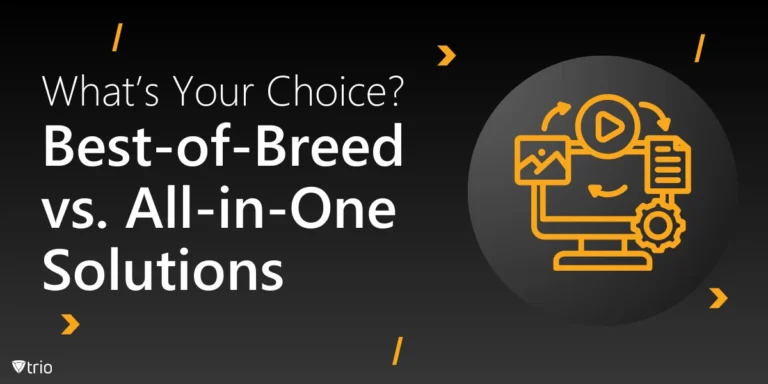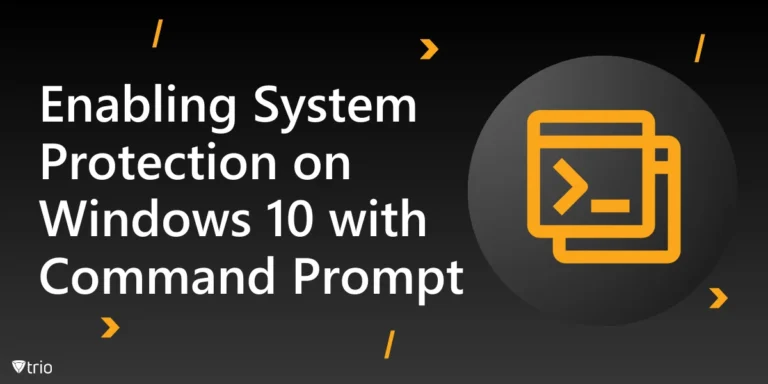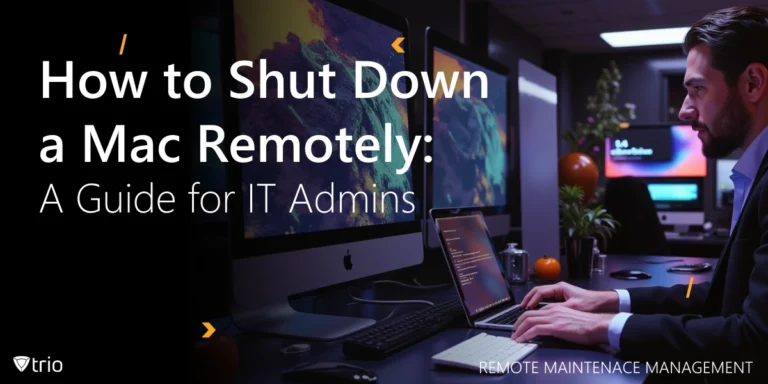Wenn es um die Verwaltung mobiler Geräte in einem Unternehmensumfeld geht, ist die Wahl zwischen lokalem MDM und cloudbasiertem MDM eine entscheidende Entscheidung. In diesem Blogbeitrag werfen wir einen genaueren Blick auf On-Premises MDM, seine Vorteile, Überlegungen und wie es im Vergleich zu cloudbasierten Alternativen abschneidet. Das Verständnis dieser Unterschiede ist für Organisationen, die eine sichere und effektive Lösung anstreben, von entscheidender Bedeutung Mobile Geräteverwaltung Strategie.
Was ist On-Premise-MDM?
Innerhalb des Gebäudes Der Begriff „Mobile Device Management“ (MDM) beschreibt den Einsatz von MDM-Software innerhalb der eigenen virtuellen oder physischen Infrastruktur eines Unternehmens im Gegensatz zur Nutzung cloudbasierter Dienste. MDM ist ein wesentlicher Bestandteil des Business Mobility Managements, das sich auf die Verwaltung und den Schutz mobiler Geräte – wie Tablets und Smartphones – innerhalb des Unternehmensnetzwerks konzentriert.
Im Rahmen von lokalem MDM wird die gesamte MDM-Infrastruktur, einschließlich Servern und Datenbanken, intern von der Organisation gehostet und verwaltet. Dieser Ansatz bietet ein höheres Maß an Kontrolle und Anpassung im Vergleich zu cloudbasierte MDM-Lösungen. Mit Lokalem MDM Lösungen werden in der Regel über eine zentrale Konsole verwaltet, die es Administratoren ermöglicht, Sicherheitsrichtlinien durchzusetzen, Geräteeinstellungen zu konfigurieren, Anwendungen bereitzustellen und den Status mobiler Geräte zu überwachen, die mit dem Unternehmensnetzwerk verbunden sind.
Der Hauptvorteil von Lokalem MDM ist die direkte Kontrolle, die es Unternehmen über ihre Infrastruktur für die Verwaltung mobiler Geräte bietet. Diese Kontrolle ist besonders wichtig für Unternehmen, die in stark regulierten Branchen tätig sind oder besondere Sicherheits- und Compliance-Anforderungen haben. Die Bereitstellung vor Ort ermöglicht Unternehmen außerdem einen individuelleren und differenzierteren Ansatz für die Geräteverwaltung und stellt so sicher, dass die Sicherheitsrichtlinien genau auf die Anforderungen des Unternehmens abgestimmt sind.
Während lokalem MDM eine bessere Kontrolle bietet, müssen Unternehmen auch in ihre Infrastruktur investieren und diese warten, einschließlich Hardware, Software und laufende Wartung. Im Gegensatz dazu wird die Infrastruktur cloudbasierter MDM-Systeme von einem externen Dienstleister betreut. Die Entscheidung zwischen cloudbasiertem und lokalem MDM hängt letztendlich von einer Reihe von Variablen ab, darunter der gesamten IT-Strategie des Unternehmens, Sicherheitspräferenzen und der Anforderung, Vorschriften einzuhalten.

Lokalem MDM im Vergleich zu cloudbasierten MDMs
Lokalem MDM (Mobile Device Management) und Cloud-basiertes MDM sind zwei unterschiedliche Ansätze zur Verwaltung und Sicherung mobiler Geräte innerhalb einer Organisationsumgebung. Allerdings, laut O'Rielly Die meisten Unternehmen nutzen die Cloud, sei es für MDMs oder andere Tools. Jeder Ansatz hat seine Vorteile und Überlegungen, sodass die Wahl zwischen ihnen von den spezifischen organisatorischen Anforderungen abhängt. Vergleichen wir die beiden anhand dieser MDM-Liste mit Vor- und Nachteilen:
Vorteile von On-Premise-MDM
- Verbesserte Kontrolle:Mit lokalem-MDM erhalten Unternehmen direkte Kontrolle über ihre MDM-Infrastruktur. Dieses Maß an Kontrolle ist für Unternehmen mit spezifischen Sicherheits- und Compliance-Anforderungen von entscheidender Bedeutung und ermöglicht es ihnen, Konfigurationen und Richtlinien an ihre individuellen Anforderungen anzupassen.
- Datenschutz und Souveränität:Organisationen haben häufig Bedenken hinsichtlich des geografischen Standorts ihrer Daten. Vor-Ort-MDM sorgt dafür, dass vertrauliche Informationen innerhalb der physischen oder virtuellen Grenzen des Unternehmens bleiben, und trägt so Bedenken hinsichtlich Datenschutz und Souveränität Rechnung.
- Anpassung:Die lokalem MDM bieten ein hohes Maß an Individualisierung. Unternehmen können Sicherheitsrichtlinien definieren und durchsetzen, die genau auf ihre Sicherheits- und Betriebsanforderungen abgestimmt sind.
Überlegungen zu lokalem MDM
- Infrastruktur und Wartung:Für die Bereitstellung vor Ort müssen Unternehmen in ihre Infrastruktur investieren und diese warten, einschließlich Hardware, Software und laufende Wartung. Dies kann zu höheren Vorabkosten und laufenden Verantwortlichkeiten führen.
- Skalierbarkeit:Unternehmen müssen sicherstellen, dass die lokalem MDM-Lösung effektiv skaliert werden kann, um einer wachsenden Anzahl von Geräten und sich ändernden Sicherheitsanforderungen gerecht zu werden.
Vorteile von Cloud-basiertem MDM
- Einfache Bereitstellung:Cloudbasierte MDM-Lösungen haben oft schnellere Bereitstellungszeiten, da die Infrastruktur von einem Drittanbieter verwaltet wird. Dies kann für Organisationen von Vorteil sein, die eine schnelle Implementierung anstreben.
- Kosteneffizienz:Cloud-Lösungen sind in der Regel mit geringeren Vorabkosten verbunden, da Unternehmen nicht in ihre Infrastruktur investieren müssen. Dieses Kostenmodell kann für kleinere Unternehmen oder diejenigen, die eine vorhersehbarere Kostenstruktur suchen, von Vorteil sein.
- Automatische Updates und Wartung:Cloudbasierte Lösungen umfassen in der Regel automatische Updates und Wartung, wodurch die Belastung der internen IT-Teams verringert wird. Dadurch wird sichergestellt, dass das MDM-System mit den neuesten Sicherheitsfunktionen auf dem neuesten Stand bleibt.
Überlegungen zum cloudbasierten MDM
- Abhängigkeit von der Internetverbindung:Cloudbasierte Lösungen basieren auf Internetkonnektivität. Wenn Verbindungsprobleme auftreten, kann dies die Fähigkeit zur effektiven Verwaltung und Sicherung mobiler Geräte beeinträchtigen.
- Bedenken hinsichtlich der Datensicherheit:Einige Unternehmen, insbesondere solche in stark regulierten Branchen, haben möglicherweise Bedenken hinsichtlich der Speicherung sensibler Daten in der Cloud. Es ist wichtig, einen seriösen Cloud-Dienstanbieter mit strengen Sicherheitsmaßnahmen zu wählen.
- Begrenzte Anpassung:Während Cloud-basierte Lösungen Komfort bieten, können sie im Vergleich zu lokalem MDM -Lösungen Einschränkungen hinsichtlich der Anpassung aufweisen.
Verschiedene Überlegungen, darunter organisatorische Präferenzen, Sicherheitsanforderungen, Anforderungen an die Einhaltung gesetzlicher Vorschriften und die allgemeine IT-Strategie, beeinflussen die Entscheidung zwischen lokalem MDM und cloudbasiertem MDM. Beide Strategien bieten Vorteile und die Wahl sollte im Einklang mit den besonderen Zielen und Einschränkungen der Organisation getroffen werden.
Abschluss
Ab sofort bietet unsere MDM-Lösung Trio einen cloudbasierten Ansatz für MDMs. Das bedeutet, dass wir für Sie eine günstigere, benutzerfreundliche und skalierbare Option sind Holen Sie sich Trio im Augenblick. Falls Sie auf der Suche nach einem lokalem-MDM sind, sind wir bald für Sie da (wir sind noch dabei, unseren On-Premises-Ansatz zu perfektionieren und haben ihn noch nicht veröffentlicht). Alles in allem hängt die Wahl zwischen einem lokalem MDM und einem cloudbasierten MDM von der Größe Ihres Unternehmens, Ihrem Budget und der Art Ihrer Arbeit ab.
Get Ahead of the Curve
Every organization today needs a solution to automate time-consuming tasks and strengthen security.
Without the right tools, manual processes drain resources and leave gaps in protection. Trio MDM is designed to solve this problem, automating key tasks, boosting security, and ensuring compliance with ease.
Don't let inefficiencies hold you back. Learn how Trio MDM can revolutionize your IT operations or request a free trial today!





